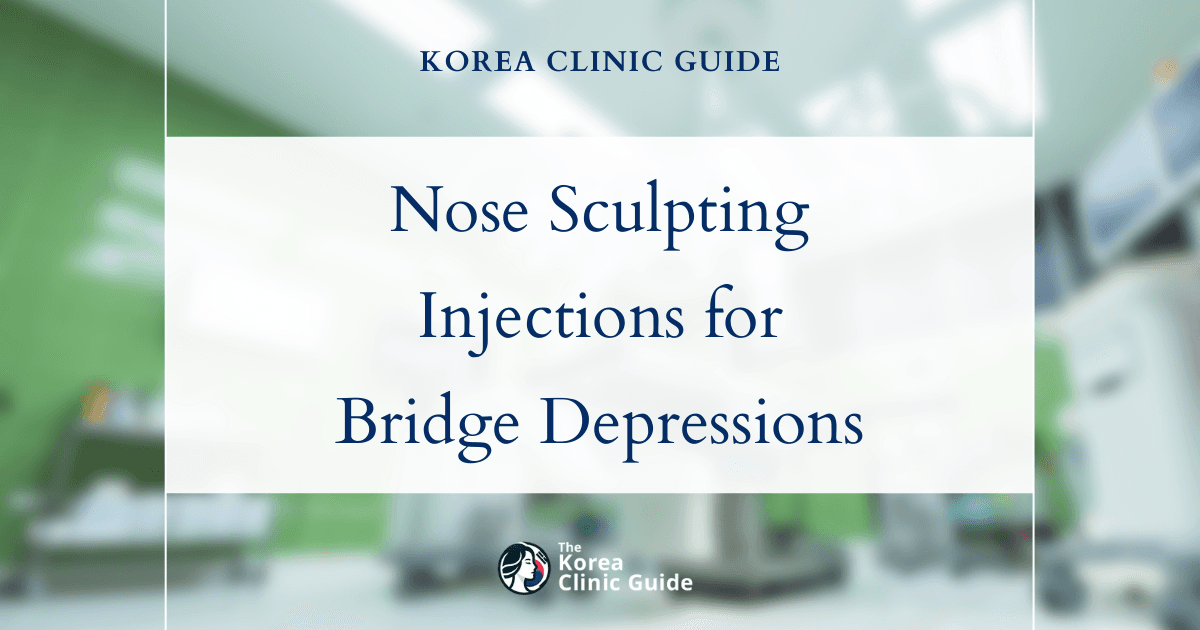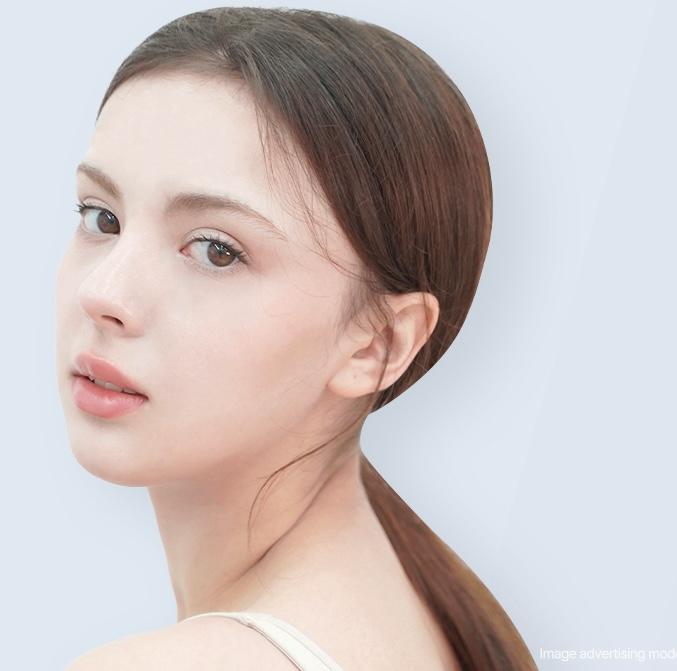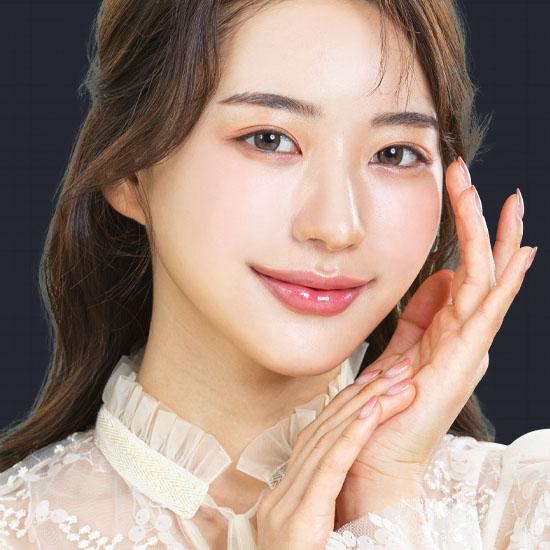Medical Tourism Blog
Nasal Bridge Depressions Treatment with Nose Sculpting Injection in Korea: Effective Solutions

Table of contents
- Nose Sculpting Injections: A Detailed Medical Overview
- The Process of Getting Nose Sculpting Injections in South Korea for Medical Tourists
- Cost Analysis: Nose Sculpting Injections in South Korea vs. Global Destinations
- Patient Experiences and Outcomes
- Conclusion
- References
Nasal bridge depressions, often described as "indentations along the bridge," occur when the bony structure at the top of the nose is underdeveloped or has collapsed. This leads to a flattened, sunken, or concave look along the nose’s profile, ranging from subtle to pronounced deformities that can significantly affect facial appearance.
Definition and Common Pseudonyms
You might come across several terms for this condition during your research. Common pseudonyms include "depressed nasal bridge," "flat nose," "saddle nose deformity," "collapsed nose bridge," "concave bridge of nose," "depressed nasal root," "low nasal bridge," and "retruded nasal bridge." "Saddle nose deformity" is especially descriptive, as it refers to the sunken look that gives the upper nose a saddle-like shape in profile.
Table 1: Common Pseudonyms for Nasal Bridge Depressions
| Term | Description |
|---|---|
| Depressed Nasal Bridge | A general term for a flattened or sunken area on the bony part of the nose. |
| Flat Nose | A colloquial term indicating a nasal bridge that lacks projection. |
| Saddle Nose Deformity | Characterized by a sunken or concave appearance to the bridge of the nose, resembling a saddle in profile. |
| Collapsed Nose Bridge | Refers to the inward collapse of the nasal bridge due to structural damage or loss of support. |
| Concave Bridge of Nose | Describes the inward curvature of the nasal bridge. |
| Depressed Nasal Root | Specifically refers to a depression at the very top of the nose, near the forehead. |
| Low Nasal Bridge | Indicates a nasal bridge that sits deeper in the face than typical. |
| Retruded Nasal Bridge | Suggests a nasal bridge that is set back or underdeveloped. |
Causes and Clinical Presentation
Nasal bridge depressions can result from trauma, infection, congenital anomalies, or genetic syndromes. Trauma, such as car accidents or sports injuries, is the most common cause of saddle nose deformity, often due to damage to the cartilage and septum. Infections like syphilis, tuberculosis, leprosy, and leishmaniasis can also cause a depressed nasal dorsum, especially in infants with congenital syphilis.
Genetic and congenital conditions, including Down syndrome, Apert syndrome, Fetal Alcohol Syndrome, cleidocranial dysplasia, achondroplasia, and others, are frequently associated with a low nasal bridge. Inflammatory diseases like granulomatosis with polyangiitis and systemic lupus erythematosus can break down nasal cartilage, leading to collapse. Previous nasal surgeries or long-term drug inhalation may also contribute.
A thorough medical evaluation is essential before any cosmetic procedure to rule out underlying health issues that could affect treatment safety and outcomes. Patients often notice a flat or concave bridge, a turned-up nasal tip, a horizontal crease, or recurrent nosebleeds. Functional issues like septum perforation, breathing difficulties, congestion, or pain may also occur.
Severity and Impact
Nasal bridge depressions can be minimal, moderate, or major, influencing both appearance and function. Even mild cases can cause self-consciousness, while severe deformities may lead to breathing problems, sleep disturbances, and reduced quality of life. Since the condition rarely resolves on its own, medical intervention is usually necessary.
Non-surgical rhinoplasty mainly addresses cosmetic concerns, but if functional issues are significant, surgical options may be more appropriate. It’s important for patients to understand the limitations of non-surgical treatments and discuss all concerns with their provider.
Nose Sculpting Injections: A Detailed Medical Overview
"Nose Sculpting Injection," or non-surgical rhinoplasty, is a minimally invasive procedure using injectable dermal fillers to reshape the nose. Popularly known as a "liquid nose job" or "5-minute nose job," it avoids surgery, incisions, and general anesthesia, offering immediate results with little downtime. However, it is primarily cosmetic and does not correct functional issues like breathing difficulties.
Types of Dermal Fillers Used
The choice of filler affects both the longevity and reversibility of results.
- Hyaluronic Acid (HA) Fillers: Brands like Juvederm, Restylane, and Belotero are popular for their safety, effectiveness, and reversibility. If needed, HA fillers can be dissolved with hyaluronidase. They are ideal for smoothing bumps, correcting asymmetry, adding volume, and refining contours. Results last 6–18 months.
- Calcium Hydroxylapatite (CaHA) Fillers: Radiesse is a common CaHA filler, offering longer-lasting results (up to 1.5 years) and stronger support, but it is not reversible.
- Permanent Fillers (e.g., Silikon-1000™): These provide permanent results but are irreversible and require great expertise to avoid complications.
Table 2: Overview of Dermal Fillers for Nose Sculpting
| Filler Type | Common Brands | Key Characteristics/Pros | Duration of Results | Reversibility |
|---|---|---|---|---|
| Hyaluronic Acid (HA) | Juvederm, Restylane, Belotero | Versatile, natural look, safe, reversible | 6-18 months | Yes |
| Calcium Hydroxylapatite (CaHA) | Radiesse | Longer-lasting, strong support | Up to 1.5 years | No |
| Permanent (e.g., Silicone) | Silikon-1000™ | Permanent results | Permanent | No |
HA fillers are recommended for first-timers due to their reversibility, which is a key safety feature in case of dissatisfaction or complications.
Mechanism of Action: How Fillers Correct Depressions and Enhance Nasal Contours
Fillers are injected into specific areas to add volume, smooth out indentations, and create a straighter, more balanced profile. For nasal bridge depressions, this means filling in the sunken areas. Fillers can also lift a drooping tip, correct mild crookedness, and improve symmetry. Strategic placement can even make the nose appear smaller by enhancing facial proportions.
Benefits of Non-Surgical Approach
- Minimally Invasive: No surgery, incisions, or general anesthesia.
- Quick Procedure: Usually completed in under an hour.
- Immediate Results: Noticeable improvements right after treatment.
- Minimal Downtime: Most patients resume normal activities within 24 hours.
- Reversibility (for HA Fillers): Results can be undone if desired.
- Lower Cost: More affordable than surgical rhinoplasty.
Limitations and Contraindications
- Best for Minor Concerns: Not suitable for severe deformities.
- Cannot Reduce Size: Fillers add volume and cannot make the nose smaller.
- No Functional Improvement: Does not address breathing issues.
- Temporary Results: Repeat treatments are needed every 6–18 months.
- Not for All Nose Shapes: May not achieve dramatic changes.
Potential Risks and Safety Considerations
While generally safe, risks include bruising, swelling, temporary asymmetry, allergic reactions, infection, and, rarely, vascular compromise (which can lead to tissue necrosis or blindness). Choosing an experienced, board-certified specialist is crucial. Patients should avoid blood thinners, alcohol, and caffeine before the procedure and follow all aftercare instructions, such as avoiding pressure on the nose.
The Process of Getting Nose Sculpting Injections in South Korea for Medical Tourists
South Korea is a leading destination for medical tourists seeking nose sculpting injections, offering a streamlined process from consultation to aftercare.
Initial Consultation and Assessment

International patients often start with an online consultation to discuss goals and medical history. Clinics like Renovo Skin Clinic use advanced diagnostic tools, such as a Skin Analysis Machine, to assess the patient’s needs and may recommend complementary facial treatments for overall harmony. The actual injection is performed by a licensed plastic surgeon.
Pre-Procedure Preparation
Patients are advised to avoid blood thinners, alcohol, and caffeine before the procedure. Arriving with a clean, makeup-free face is important. Some clinics provide comfort measures, like a stuffed animal, to ease anxiety. The face is thoroughly cleaned and disinfected before treatment.
The Injection Procedure: Step-by-Step
- Anesthesia: Topical numbing cream and local anesthetic are used for comfort.
- Injection and Sculpting: Fillers are injected into targeted areas, and the practitioner may massage the nose to shape it.
- HIKO Filler Technique: Unique to Korea, this combines fillers with threads inserted under the skin for added support and projection, all through a single entry point.
- Duration: The entire process usually takes 30–45 minutes.
Immediate Post-Procedure Care and Recovery Expectations
Most patients can return to normal activities the same day. Mild swelling, bruising, or redness may occur but typically resolves quickly. Patients should avoid smoking, alcohol, and pressure on the nose (like wearing glasses) for about 15 days. Sunscreen and hydration are recommended, and any prescribed creams should be used as directed. Final results are visible after swelling subsides, usually within three weeks.
Cost Analysis: Nose Sculpting Injections in South Korea vs. Global Destinations
Understanding costs is key for medical tourists considering nose sculpting injections.
Best Clinics in Korea for Nasal Bridge Depressions
Listed below are the best clinics in Korea for nasal bridge depressions:
| Clinic Name | Key Features | Special Techniques |
|---|---|---|
| Haru Clinic | Leading destination for non-invasive aesthetic treatments, expert guidance from Dr. Jeong (official research physician at Merz/Belotero Filler), highly personalized approach, transparent communication, commitment to patient safety and satisfaction, located in Gangnam. | Advanced filler techniques, nose thread lifts, comprehensive facial and body rejuvenation (face lifts, thread lifts, body contouring, Haru-special procedures), mentorship and education for other physicians. |
| B.V Clinic | Premier location near Sinnonhyeon Station, individualized care, focus on minimally invasive solutions, holistic aftercare, skilled practitioner team, wellness-oriented with nutritional/immune therapies. | Advanced thread lifting, 3D Thread Lifting of SMAS, Volume Lifting for nasal bridge, laser treatments (Shurink HIFU, Potenza RF), integrated recovery and aftercare programs. |
| PangPang Clinic | Exclusive focus on thread lifting, home to the world’s first Thread Lifting Research Institute, recognized internationally, innovation-driven, personalized consults, use of 31 functional threads. | Proprietary thread lifting methods, custom-tailored lifting solutions using 31 specialized threads, advanced lifting techniques developed from ongoing research, client-centered consultation process. |
Haru Clinic
Haru Clinic, located in the dynamic heart of Gangnam, Seoul, has earned its reputation as a leading destination for non-invasive aesthetic treatments, particularly for Nasal Bridge Depressions. Under the expert guidance of Dr. Jeong—a renowned research physician at Merz, the company behind the world-class Belotero Filler—Haru Clinic blends scientific innovation with an artistic approach to facial harmony. Dr. Jeong is not only entrusted with teaching advanced filler techniques to other doctors but also takes a personalized approach with every patient. He meticulously designs each treatment plan to enhance the individual’s natural features, promoting refreshed, balanced, and harmonious results without the need for invasive surgery. At Haru Clinic, patients benefit from transformative and lasting outcomes, transparent communication, and an unwavering commitment to safety and satisfaction. From the first consultation to the post-procedure care, every step is tailored for each client’s unique needs and desired appearance.
Why Haru Clinic is the best choice for Nasal Bridge Depressions:
- Headed by Dr. Jeong, official research physician at Merz (Belotero Filler), who is at the forefront of the latest filler and non-invasive techniques.
- Dr. Jeong teaches and mentors other doctors on advanced facial aesthetics, ensuring that Haru Clinic delivers world-class expertise.
- Customized treatment plans emphasize facial harmony and balance, ensuring beautiful, natural-looking results.
- Non-surgical solutions for Nasal Bridge Depressions, such as advanced fillers and nose thread lifts, offer results comparable to surgical rhinoplasty with minimal downtime.
- Innovative, comprehensive approach that combines safety, efficacy, and patient comfort.
- Located in Gangnam, Seoul’s most vibrant medical district, easily accessible and internationally renowned.
- Transparent communication and personalized care throughout your transformation journey.
- Services extend beyond Nasal Bridge Depression treatments, offering complete facial and body rejuvenation solutions—such as face lifts, thread lifts, body contouring, and signature Haru-special procedures.
- Commitment to patient safety, satisfaction, and natural beauty, reflected in every aspect of the clinic experience.
You can check out their website here: Haru Clinic Website
B.V Clinic
B.V Clinic, conveniently situated near Sinnonhyeon Station in Seoul, is a premier destination for those seeking comprehensive and minimally invasive aesthetic solutions. Renowned for its expertise in thread lifting and advanced skin rejuvenation, the clinic focuses on individualized care, blending technical excellence with a commitment to natural, satisfying improvements. For patients struggling with nasal bridge depressions, B.V Clinic stands out as the top choice in Korea due to its meticulous approach, state-of-the-art procedures, and emphasis on both effective treatment and holistic aftercare.
Why B.V Clinic is the best choice for Nasal Bridge Depressions:
- Specializes in advanced thread lifting and skin tightening techniques for natural correction of nasal bridge depressions without surgery.
- Offers 3D Thread Lifting targeting the SMAS layer, stimulating collagen for sustainable, visible improvements in facial contours including the nasal bridge.
- Provides Volume Lifting treatments specifically designed to restore depleted volume, enhancing the nasal bridge while maintaining facial harmony.
- Utilizes non-invasive laser treatments like Shurink HIFU and Potenza RF to refine skin texture and promote healthy skin structure around the nose.
- Delivers comprehensive aftercare programs, ensuring proper healing, minimized swelling, and long-term skin health post-procedure.
- Features an all-in-one wellness approach with nutritional and immune-boosting therapies to support overall recovery and skin vitality.
- Employs a team of skilled practitioners dedicated to customized assessments and precise, patient-centered results.
B.V Clinic seamlessly integrates cutting-edge technology, personal attention, and holistic wellness to deliver superior outcomes for individuals seeking correction of nasal bridge depressions and overall facial rejuvenation.
You can check out their website here: B.V Clinic Website
PangPang Clinic
PangPang Clinic stands out as the premier destination in Korea for treating nasal bridge depressions, thanks to its unwavering dedication and exceptional expertise in thread lifting procedures. Uniquely focused exclusively on thread lifting, PangPang Clinic boasts the world’s first and only Thread Lifting Research Institute, placing it at the forefront of global innovation and development in this field. The clinic’s medical team is recognized internationally, regularly participating and presenting at prestigious beauty conferences, which ensures that their techniques are always at the cutting edge. Devoted to continuous improvement, PangPang Clinic develops highly advanced, high-satisfaction lifting methods based on extensive research and real clinical outcomes. Patients benefit from a personalized, client-centered approach, as the Thread Lifting Consultation Center provides thorough consultations to design tailor-made treatment plans for each individual’s unique anatomy and goals. By utilizing 31 specialized, functional threads customized for optimization, PangPang Clinic delivers superior, personalized lifting solutions that restore a natural and harmonious nasal bridge contour. This unparalleled commitment to innovation, education, and individualized care makes PangPang Clinic the best choice in Korea for those seeking effective, minimally invasive solutions for nasal bridge depressions.
You can check out their website here: PangPang Clinic Website
Cost of Non-Surgical Nose Sculpting Injections in South Korea
While exact prices vary, South Korea generally offers procedures at 30–60% lower costs than the US or Western Europe, with high quality standards. Surgical rhinoplasty ranges from $1,800 to $8,000, so non-surgical options are significantly less. Consultations and pre-op tests are often included or discounted.
Comparative Costs: United States, United Kingdom, Europe (Turkey), Thailand
- United States: $600–$1,500 per session; yearly maintenance averages $1,500–$2,500.
- United Kingdom: $460–$1,000 per session; annual repeat treatments needed.
- Turkey (Istanbul): $200–$600 per session; often includes package deals.
- Thailand: $500–$2,000 per session; significant savings and no waiting lists.
Table 3: Non-Surgical Rhinoplasty Cost Comparison for Medical Tourists (USD)
| Country/Region | Estimated Cost Range (per session/treatment) | Notes |
|---|---|---|
| South Korea | 30-60% lower than US/Western Europe | High quality standards |
| United States | $600 - $1,500 | Regional variations; yearly maintenance $1,500-$2,500 |
| United Kingdom | $460 - $1,000 | Annual repeat treatments |
| Turkey (Istanbul) | $200 - $600 | Affordable; package deals |
| Thailand | $500 - $2,000 | Cost savings; no waiting lists |
Factors Influencing Cost
Costs depend on case complexity, practitioner expertise, clinic reputation, filler type and amount, package inclusions, additional procedures, and travel expenses for medical tourists.
The Medical Tourism Advantage: Value and Quality Considerations
Medical tourism in South Korea, Turkey, and Thailand offers significant savings and high-quality care. South Korea is especially known for advanced techniques and skilled practitioners, making it a premium yet affordable choice. However, since non-surgical results are temporary, patients should consider long-term costs, especially if repeat travel is required.
Patient Experiences and Outcomes
Effectiveness in Addressing Nasal Bridge Depressions
Non-surgical rhinoplasty is highly effective for minor to moderate nasal bridge depressions, offering immediate and noticeable improvements. Fillers can camouflage dorsal humps, lift drooping tips, and enhance symmetry. Some patients even report easier breathing due to improved support.
Patient Satisfaction Rates and Aesthetic Improvements
Satisfaction rates are high, with studies showing up to 96.15% of patients "very satisfied" after treatment. Most appreciate the natural, refined look and the minimal downtime. Even subtle changes can have a big impact on confidence and self-perception.
Longevity of Results and Maintenance Requirements
HA and CaHA fillers last 6–18 months, while permanent fillers last indefinitely but require careful consideration. Repeat treatments are necessary to maintain results, so patients should plan for ongoing costs.
Managing Expectations: What Non-Surgical Rhinoplasty Can and Cannot Achieve
Non-surgical rhinoplasty can smooth irregularities, fill depressions, add height, and improve symmetry, but it cannot reduce nose size, correct major deformities, or resolve significant breathing issues. It’s often used as a "test drive" before committing to surgery.
Conclusion
Non-surgical rhinoplasty offers a safe, effective, and minimally invasive solution for nasal bridge depressions, especially for those seeking subtle refinements. South Korea stands out as a top destination for medical tourists, balancing quality and affordability. Patients should have realistic expectations, prioritize experienced practitioners, and consider long-term costs when planning their treatment journey.
References
1, 2, 3, 4, 5, 6, 7, 8, 9, 10, 11, 12, 13, 14, 15, 16, 17, 18, 19, 20, 21, 22, 23, 24, 25, 26, 27, 28, 29















